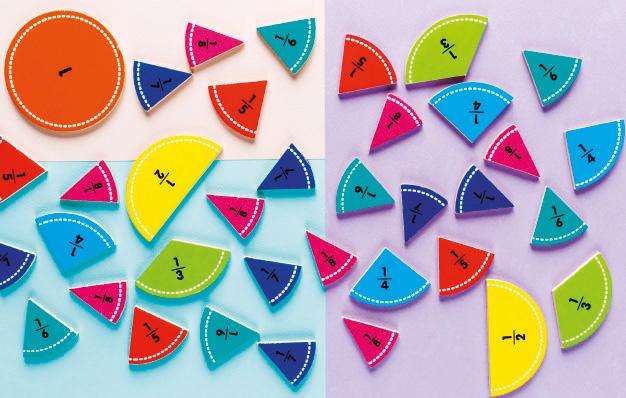
1 minute read
DECIMAL NUMBERS AND FRACTIONS 2
As humanity has evolved in terms of culture, commerce, science and daily life, we have had to develop the mathematical tools to respond to new challenges. In ancient civilisations, this cultural progress created the need for numbers that could represent parts of the unit.
In ancient Mesopotamia, they used a sexagesimal positional numeral system, which allowed them to write integers and fractions using only a few signs:
= 1 = 10 = 0
→ 1 + 15 60 → 1,25
In Europe, for several centuries, integers were expressed using the decimal system and fractions were expressed using the sexagesimal system. How complicated! But they did not know how to do it any other way.
This system, which now seems so inconvenient, was inherited from the ancient Babylonians. It survived for a long time because people were slow to accept the decimal system, which was brought from India by the Arabs, towards the 8th century.
By the mid-16th century, some Europeans, such as the Flemish mathematician Simon Stevin, began to replace sexagesimal fractions with decimal ones, as this made calculations much easier.
Over time, decimal fractions ended up completely replacing sexagesimal fractions for expressing incomplete units. The decimal system continued to evolve and its notation was further simplified, until, by the early 17th century, we arrived at the notation we use today.
Despite the adoption and widespread use of the decimal system, the sexagesimal is still with us today in the measurement and expression of two magnitudes: time and angles.
Use what you have learned to solve this problem
Viki has arranged to meet her friends tomorrow to play tennis. She is checking her sports bag to make sure it is not too heavy.
She calculates how much each of the items will roughly weigh.
Bread: 125 g
0.1 kg
1 Write the weight of each of the above items in grams.
RemembeR: a litre of water weighs one kilogram.
2 Look at the different ways of writing the weight of the bag of balls and explain how we arrive at each one.
⎯→ 6 · 60 g = 360 g
3 Do the same for the sandwich. ⎯→ … g anayaeducacion.es
4 Now do the same for all of the other items in Viki's bag. In other words, write their weight in grams and in kilos as a decimal number and as a fraction.
5 Which form do you think is the easiest to understand in each case?
Revise how to read and write decimal numbers.





